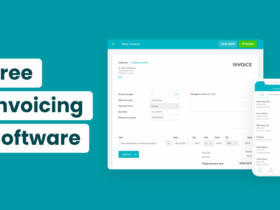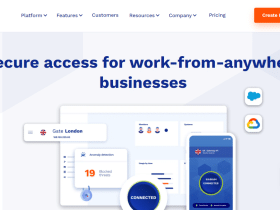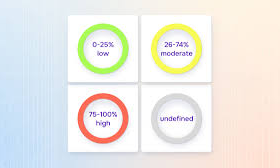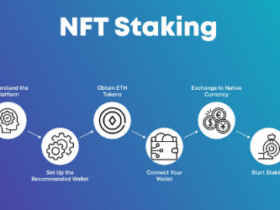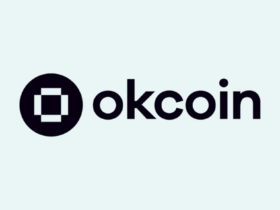What Is Crypto Airdrop?
A crypto airdrop is a marketing strategy used by blockchain-based companies or projects to distribute their cryptocurrency tokens or coins to a large number of users for free or as a reward for performing certain actions, such as completing a survey, joining a Telegram group, or sharing their project on social media.
Airdrops are usually conducted to generate awareness and interest in a new project, to increase the token’s liquidity and trading volume, or to reward early adopters and supporters of a project. Airdropped tokens are often distributed through Ethereum-based smart contracts and are automatically sent to the wallets of eligible participants.
While some airdrops can be legitimate opportunities for users to acquire new cryptocurrency tokens, others may be scams or fraudulent schemes aimed at tricking users into giving away their private keys or personal information. Therefore, it is important to carefully research and verify the legitimacy of an airdrop before participating.
What Is Data Ownership Protocol Airdrop?
Data Ownership Protocol Airdrop aims to redefine paradigms by enabling user-owned data, empowering users to selectively disclose their on-chain activities. Leveraging zk-SNARKs and ECDSA, they empower users to precisely curate the information they wish to share regarding their asset holdings and transactions, all while maintaining seamless interoperability with the Ethereum dApps and liquidity.
Data Ownership Protocol has launched a testnet and has confirmed to do an airdrop to the testnet participants. Sign up, create your DOP wallet and complete the testnet steps to be eligible for the airdrop. Also, refer your friends and get 20% of their reward.
Basic Data Ownership Protocol Airdrop Points
| Basic | Details |
|---|---|
| Token Name | Data Ownership Protocol Airdrop |
| Platform | ETH |
| Support | 24/7 |
| Total value | N/A |
| KYC | KYC Is Not Requirement |
| Whitepaper | Click Here To View |
| Max. Participants | Unlimited |
| Collect Airdrop | Click Here To Collect Free Airdrop |
How To Claim Data Ownership Protocol Airdrop Step-by-Step Guide:
- Visit the Data Ownership Protocol testnet page.
- Submit your email and click on “Continue”.
- Now click on “Create wallet” and create a DOP wallet.
- Submit a password and then save your recovery phrase.
- Now log in with your password and connect your Metamask wallet.
- Connect your Twitter account and follow them on Twitter.
- Now claim Sepolia ETH, claim testnet DOP tokens and claim testnet tokens.
- Now, encrypt some tokens, send the encrypted tokens and also decrypt some tokens.
- By now, you would’ve finished all seven steps.
- After completing all the steps, you will get a referral link and can refer your friends to get 20% of their rewards.
- Participants who complete all steps will receive DOP rewards once the token launches in Q1 2024.
- For more information regarding the testnet airdrop, see this Medium article.
How To Check Data Ownership Protocol Airdrop Is Real Or Fake
Checking the legitimacy of a crypto airdrop can be a bit tricky, as scammers often use sophisticated techniques to create fraudulent airdrop campaigns that appear to be legitimate. Here are some steps you can take to verify the authenticity of a crypto airdrop:
- Official Website and Announcements: Check the official website of Data Ownership Protocol or the project associated with the airdrop. Legitimate projects will provide information about ongoing airdrops.
- Community Engagement: Legitimate projects usually have an active and engaged community. Check the level of interaction on their official social media channels and forums. Scams often lack genuine community support.
- Whitepaper and Project Documentation: Read the project’s whitepaper and other official documentation. Legitimate projects provide detailed information about their goals, technology, and tokenomics. Be skeptical of airdrops that lack clear documentation.
- Smart Contract Address: If the airdrop involves the distribution of tokens through a smart contract, verify the contract address. You can do this by checking the contract address on blockchain explorers like Etherscan for Ethereum-based tokens. Ensure that the contract is legitimate and matches the official one provided by the project.
- Beware of Phishing: Be cautious of phishing attempts. Scammers often create fake websites and social media profiles that mimic the official project. Always double-check URLs and ensure that you are using official channels.
- In summary, it’s important to conduct thorough research, verify the source and instructions, look for feedback from other users, and trust your instincts when evaluating the legitimacy of a crypto airdrop. By taking these steps, you can minimize the risk of falling for a fraudulent airdrop and protect your assets and personal information.
What are the risks of participating in an airdrop?
Participating in an airdrop carries several risks that individuals should carefully consider before getting involved. One significant risk is the potential for scams and fraudulent activities. As the popularity of cryptocurrencies and blockchain technology grows, so does the prevalence of malicious actors seeking to exploit unsuspecting participants. Airdrop scams may involve fake projects that aim to collect personal information, private keys, or even request upfront payments under the guise of distributing free tokens.
Additionally, participants should be cautious about the legitimacy of the airdrop itself, as some projects may not have a solid foundation or may be abandoned after the token distribution, rendering the acquired tokens worthless. Furthermore, regulatory uncertainties surrounding airdrops in different jurisdictions could expose participants to legal complications. It is crucial for individuals to thoroughly research and verify the authenticity of the airdrop, the project behind it, and the associated risks before deciding to participate.
Data Ownership Protocol Airdrop Pros Or Cons
Pros of participating in an airdrop:
- User Empowerment: The protocol promotes user empowerment by allowing individuals to have full control over their own data. Users can selectively disclose information about their asset holdings and transactions, giving them greater privacy and autonomy.
- Privacy Enhancement: Leveraging zk-SNARKs (zero-knowledge succinct non-interactive arguments of knowledge) and ECDSA (Elliptic Curve Digital Signature Algorithm) enhances privacy. This means users can share specific information without revealing unnecessary details, contributing to a more secure and private ecosystem.
- Interoperability with Ethereum dApps: The protocol seamlessly integrates with Ethereum decentralized applications (dApps) and liquidity, ensuring compatibility and accessibility within the larger blockchain ecosystem. This interoperability enhances the utility and adoption potential of the protocol.
Cons of participating in an airdrop:
- Complex Technology: The use of advanced cryptographic techniques such as zk-SNARKs and ECDSA may pose a barrier for some users who are not familiar with these technologies. This complexity could limit the adoption of the protocol among less technically inclined users.
- Dependency on Ethereum: While interoperability with Ethereum is a strength, it also introduces a potential dependency on the Ethereum network’s scalability and security. Issues with the underlying Ethereum infrastructure could impact the performance of the Data Ownership Protocol.
- Limited Information on Airdrop: The announcement of an airdrop is positive, but the details regarding the distribution, eligibility criteria, and the total amount allocated for the airdrop are not provided. Lack of transparency in this regard may lead to confusion and skepticism among potential participants.
Data Ownership Protocol Airdrop Final Verdicts
In conclusion, the Data Ownership Protocol marks a significant step forward in the evolution of data ownership within the blockchain space. By placing control firmly in the hands of users, the protocol addresses the pressing issue of data privacy and security, allowing individuals to determine the extent to which their on-chain activities are disclosed.
The incorporation of cutting-edge technologies such as zk-SNARKs and ECDSA not only ensures a high level of security but also provides users with the ability to finely curate the information they choose to share. This selective disclosure empowers users to maintain a balance between transparency and privacy, a crucial aspect in the rapidly evolving landscape of decentralized finance.
The successful launch of the testnet is a testament to the protocol’s commitment to robust development and testing. Offering an airdrop to testnet participants is a commendable initiative, encouraging users to actively engage with the platform and experience its capabilities firsthand. This not only serves as a practical demonstration of the protocol’s functionality but also rewards early adopters who contribute to its refinement.
To participate in this groundbreaking initiative, users are encouraged to sign up, create their Data Ownership Protocol wallets, and complete the testnet steps. The added incentive of airdrop rewards further motivates users to explore and embrace the protocol. Additionally, the referral program, offering a 20% reward for successful referrals, promotes community growth and involvement, fostering a network effect that can contribute to the widespread adoption of the Data Ownership Protocol.
In summary, the Data Ownership Protocol stands as a beacon for user-centric data management in the blockchain realm. Its emphasis on empowerment, security, and incentives makes it a promising player in the ongoing transformation of decentralized technologies. As users actively engage with the protocol, it is poised to reshape paradigms, offering a glimpse into a future where individuals have greater control over their digital footprints and financial transactions.






